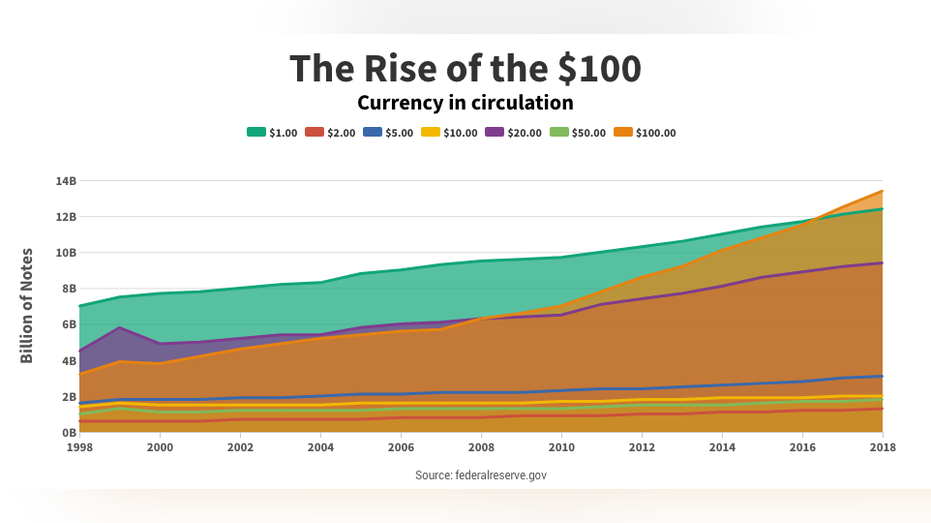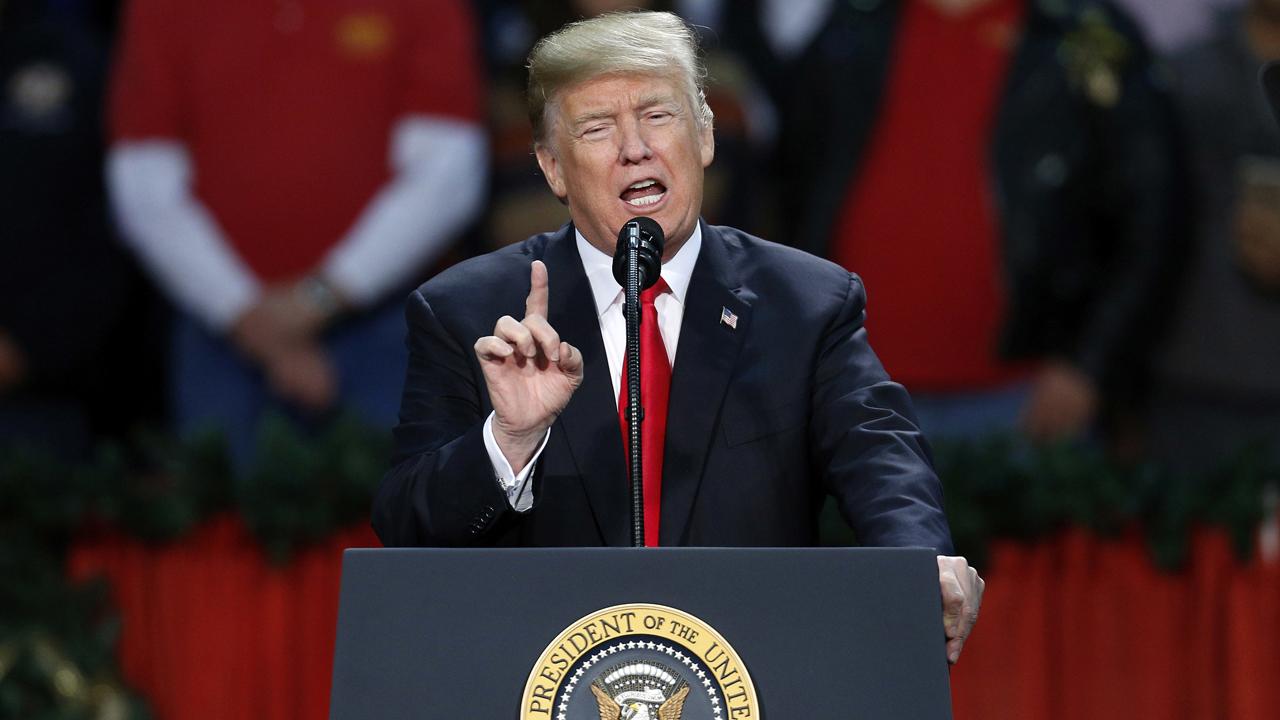All about the Benjamins: Printing of $100 bills is soaring
It’s all about the Benjamins.
The $100 bill now makes up more than 60 percent of all U.S bills after first surpassing the $1 bill in 2017 as the most widely circulated banknote. The 13.4 billion of $100 bills in circulation is more than double the amount during the financial crisis and up more than fourfold from 1998, according to the International Monetary Fund. The surge in popularity comes even as more consumers are choosing to use digital payments for their transactions.
So what is driving the boom in Benjamins, which is happening despite more people using digital payments to conduct transactions?
According to Deutsche Bank Securties Chief International Torsten Slok, there could be several reasons in play.
"We don’t know what is behind the increase in demand for $100 bills," he told FOX Business. "It could be driven by a global fear of negative interest rates in Europe and Japan, or it could be a savings vehicle for U.S. households worried about another financial crisis, or it could be driven by more demand from the global underground economy."

Last month, the value of global negative-yielding debt reached $13 trillion as nervous investors looked for safety amid the ongoing trade spat between the U.S. and China.
During times of economic and political uncertainty, investors rush into the U.S. dollar for safety. For example, the number of $100 bills in circulation began to increase rapidly in the wake of the global financial crisis.
CLICK HERE TO GET THE FOX BUSINESS APP
But Lawrence Summers, Harvard professor and former director of the National Economic Council for President Obama, only partially agrees.
"I know a lot of people who plan for the next financial crisis," he told the LA Times in March. "I don’t know anyone who is holding a big hoard of hundred-dollar bills. That suggests [the bills] are mostly being used as repositories of wealth for people who want to avoid taxes or who have committed crimes.”
But Slok says anyone worried about hyperinflation as a result of all that money printing need not worry.
"If anything, the worry at the moment continues to be too low inflation," he said. "For money-printing to create hyperinflation we need the Fed to print money which again is used for tax cuts or government spending. That is why some people worry that MMT will ultimately be the cause of too high inflation."




















